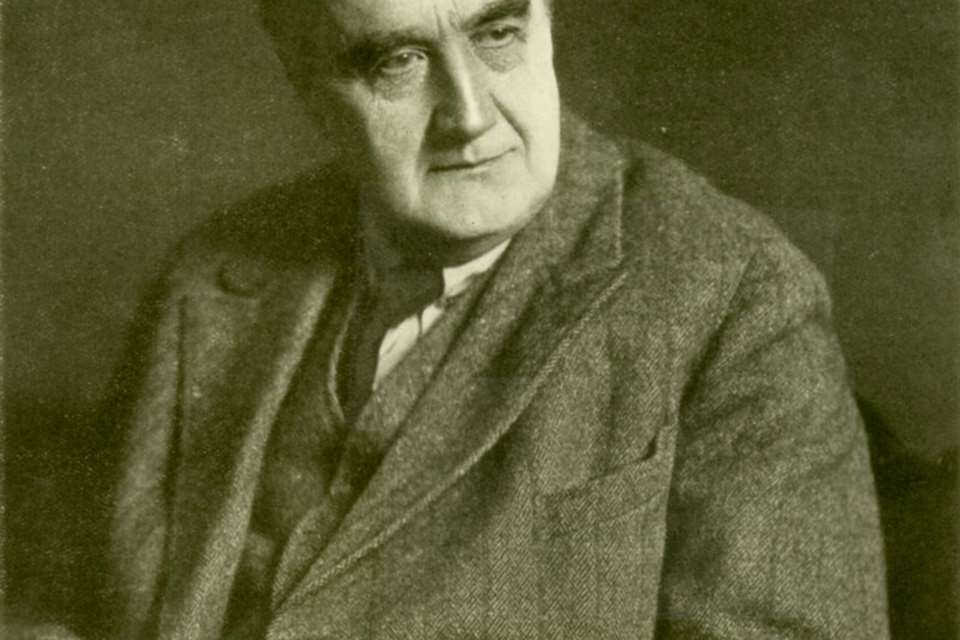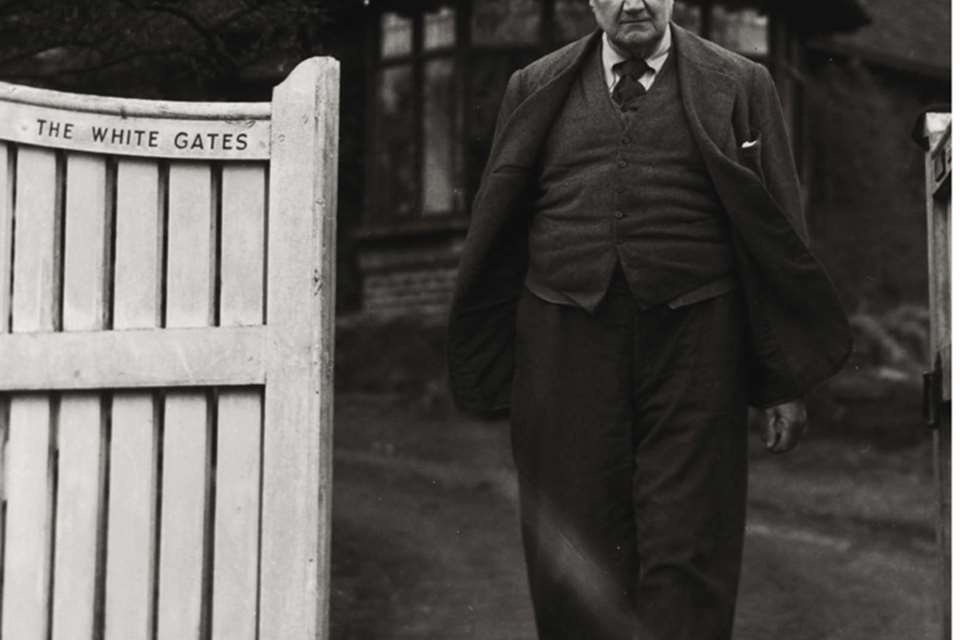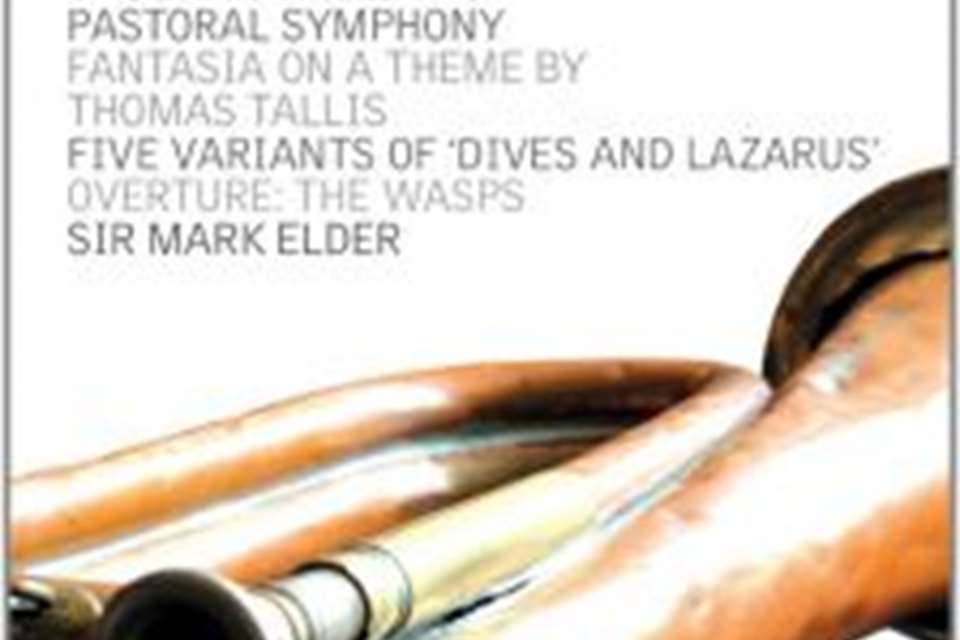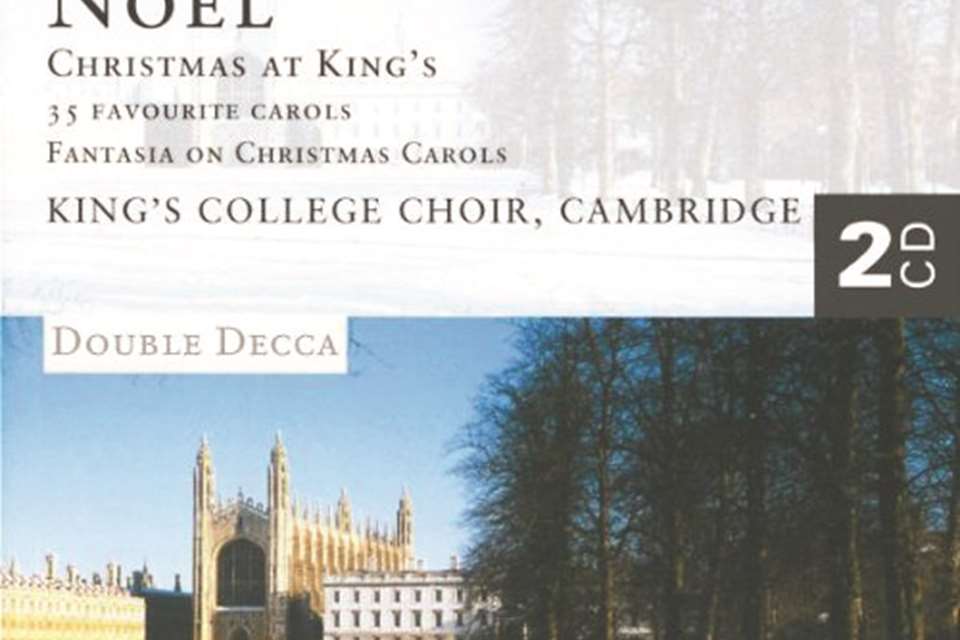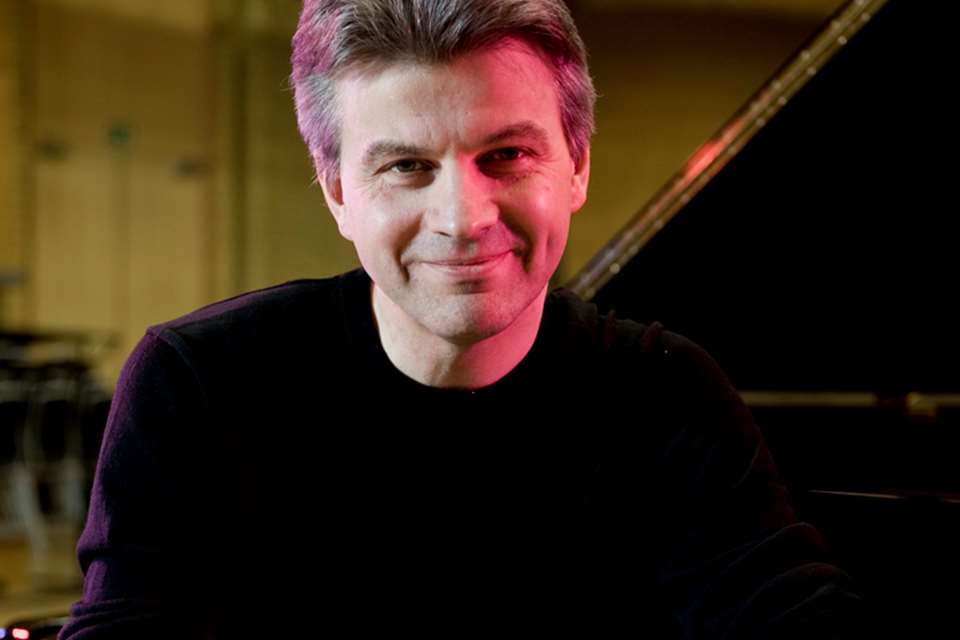How Vaughan Williams found his voice through folk song
Jeremy Dibble
Monday, April 19, 2021
The chemistry between folk song and art music was a catalyst for the English composer to discover his true voice after years of searching, writes Jeremy Dibble
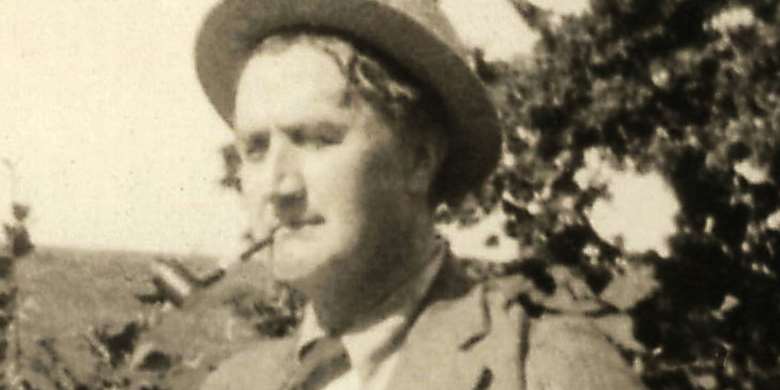
Ralph Vaughan Williams and the folk-song revival are inextricably linked. As he is one of this country’s greatest and most distinctive composers, his association with the folk-song movement enjoys perhaps the highest profile, one that is sustained by the popularity of his works based on folk songs, such as Norfolk Rhapsody No 1 (composed in 1906 along with two others which the composer withdrew), Fantasia on Christmas Carols (1912), English Folk Song Suite (originally composed for military band in 1923 but scored for orchestra the following year), Fantasia on Greensleeves (actually arranged from Vaughan Williams’s 1928 opera Sir John in Love) and Five Variants of Dives and Lazarus (1939). There is also much to relish in the way of original folk song in his first opera, Hugh the Drover (performed in 1924, but probably conceived well before the First World War). This opera, which preoccupied Vaughan Williams until virtually the end of his life (he was still revising it in 1956), is testament to his lifelong devotion to English folk song, both as an art form and a crucial influence in the passion he retained for the English carol and English hymnody, two additional areas in which he was considered a luminary during his lifetime.
For him, folk song revealed exciting raw material with the potential for national expression – the way to a new modernism
Yet Vaughan Williams was by no means the founder of the folk-song movement. Collecting and publishing old carols had begun much earlier, in the 19th century, and the popularity of folk songs and arrangements of them had already assumed momentum in the late-Victorian period. Novello was an enthusiastic publisher of them, especially for the hungry markets of the school classroom and the middle-class front room with its piano and budding amateur singers; and one can also point to the pioneering work of Sabine Baring-Gould (his Songs of the West of 1889-91 and A Garland of Country Song of 1895), Lucy Broadwood’s seminal English County Songs (1893) and the discussion of folk song in chapter three of Parry’s The Art of Music (1893). Such harvesting of folk song chimed with the contemporaneous yearning for a national identity in music which was going on all over Europe at the time, motivated by the need to rescue this vital component of national heritage before, as Frank Kidson (a member of the original committee of the Folk-Song Society) noted in his article for the second edition of Grove’s Dictionary of Music and Musicians (Vol 5, 1911), ‘[it] was entirely lost’ to the onward march of urban industrialism.
Vaughan Williams declared that he experienced some kind of epiphany when he heard ‘Bushes and Briars’ sung in the village of Ingrave, Essex, in 1903. Yet even though he almost certainly had been fully aware of folk song before this date (since he had been delivering lectures on the subject), he had remained unaffected by them. Whether he was at the opening of the Folk-Song Society in 1898, when Parry gave the inaugural address, is not known. He was not a member of the first committee, but he undoubtedly followed the work of the society and believed that its preservative role was imperative (even to the point of urging the government to provide state funding, as the French government had done).
Vaughan Williams’s ‘Ingrave epiphany’ was rather more than an ethnographical recognition of a neglected culture; for him it was a revelation of something new – exciting raw material with the potential for national expression, and the way to a new modernism. For a composer still largely enthralled by the music of Wagner (witness Toward the Unknown Region and Harnham Down from the three ‘impressions’ for orchestra) and the ‘Englishness’ of Parry and Elgar (who was enjoying his heyday), folk song and its inherent modal properties pointed the way forwards. Inspired by this revelation, he went on to produce, in the years immediately before the war, On Wenlock Edge, Fantasia on a Theme by Thomas Tallis, Five Mystical Songs, Fantasia on Christmas Carols and The Lark Ascending, works which revealed a composer who had finally found himself after an odyssey of 30-odd years.
The four volumes of folk-song arrangements instigated by the Ralph Vaughan Williams Society on its Albion label (Vol 1 was reviewed in December 2020, and Vol 2 has just been released) bear witness to the importance the composer evidently attributed to the act and purpose of arranging folk songs. This distinction is a significant one. During the course of his long and productive life, Vaughan Williams collected in the region of 800 folk tunes, though he arranged relatively few of those he copied down. In fact, only Folk-Songs from the Eastern Counties, published in 1908, were entirely arrangements of tunes that he collected himself. All other publications included arrangements of melodies gathered by other prominent collectors such as George Butterworth, Henry and Robert Hammond, Maud Karpeles, William Percy Merrick and Cecil Sharp.
Collecting and dictation (which was not always an easy process) took place in various English counties, and Vaughan Williams exhorted the nation with some urgency to participate, as he made clear in a letter to the editor of the Morning Post in December 1903: ‘Every day some old village singer dies, and with him there probably die half-a-dozen beautiful melodies, which are lost to the world for ever: if we would preserve what still remains we must set about it at once.’ The melody indeed was the thing that Vaughan Williams pursued above all. As John Francis, the author of the booklet notes to all four volumes, has commented: ‘He took less interest in the words, and often used to jot down only the first verse. Because of past printing of these songs, he felt that many of the words had been corrupted and were often meaningless and ungrammatical, an aspect which often meant having to reconstruct the texts post-mortem from old chapbooks and broadsides.’ As Francis has also stressed, Vaughan Williams was keen to accentuate that the process of collection was not to recreate the past. The preservation of folk songs wasn’t simply an exercise in archaeology but also one in aesthetic appreciation: what mattered was the beauty of the melodies and how they could speak to people in the modern age and embody a sense of value for future audiences. Such an ethos had, after all, been common to Brahms in his many artistic arrangements of German folk songs and to Stanford in his numerous volumes of Irish melodies, and was one which was entirely compatible with their Romantic harmonisations of them. Vaughan Williams was very much an inheritor of this stylistic attitude and many of his arrangements were conceived as ‘art songs’ and as bona fide compositions in their own right, enunciating those elements of a new national musical identity he was so keen to realise.
Scrutiny of the arrangements included in the four volumes of recordings on Albion reveals that Vaughan Williams continued throughout his life to be fortified and inspired by the well of folk-song melody which he and others had garnered. The first years of maturity show, perhaps understandably, a particularly high level of enthusiasm – in Folk-Songs from the Eastern Counties (FSEC) of 1908; Folk-Songs from Sussex (FSS) of 1912; Two English Folk-Songs (TEFS) for voice and violin, collected around 1913 by Sharp and Butterworth (but not published until 1935); and Selection of Collected Folk-Songs Vol 1 (SCFS), published in 1917, a rare instance of the composer’s musical activity during the First World War. But arrangements continued to appear throughout the 1930s, in Folk Songs from Newfoundland (FSN; 1934), Six English Folk-Songs (SEFS; 1935) and A Selection of Some Less Known Folk-Songs Vol 2 (1935). Further arrangements were published posthumously in the Penguin Book of English Folk Songs (PBEFS) of 1959 and English Folk Songs from the Southern Appalachian Mountains (EFSSAM), collected by Sharp and Karpeles between 1916 and 1918 but not published until 1967.
The prevailing, not to say indelible, impression left by these arrangements is the splendour of the melodies themselves
The vast majority of the songs offer the singer the ‘ballad’ model, which had been freely exploited by Schubert and Carl Loewe in the early 19th century but which had been neglected in more modern Lieder. There is much opportunity for characterisation, change of accent and even dialogue between singers, and this is a challenge admirably accepted by the three soloists on the Albion recordings: Mary Bevan, Nicky Spence and Roderick Williams. Many of the songs convey the sadness of lost love and conclude with little respite for the poor downcast lover. Some are robust (often those to do with the common agrarian theme of ploughing), some sexually risqué, some graphically violent and others even theatrical. A handful of the songs, because of their inbuilt modal properties, end quizzically on the dominant. Many also have the distinguishing element of a refrain. One or two are downright hilarious, such as ‘Farmyard Song’ (SCFS), which provides an opportunity for animal noises; its repetitive formula can be found in other songs such as ‘One Man, Two Men’ (SEFS) and ‘The Twelve Apostles’ (EFSSAM), a version of which I can remember singing as a young Scout round the campfire.
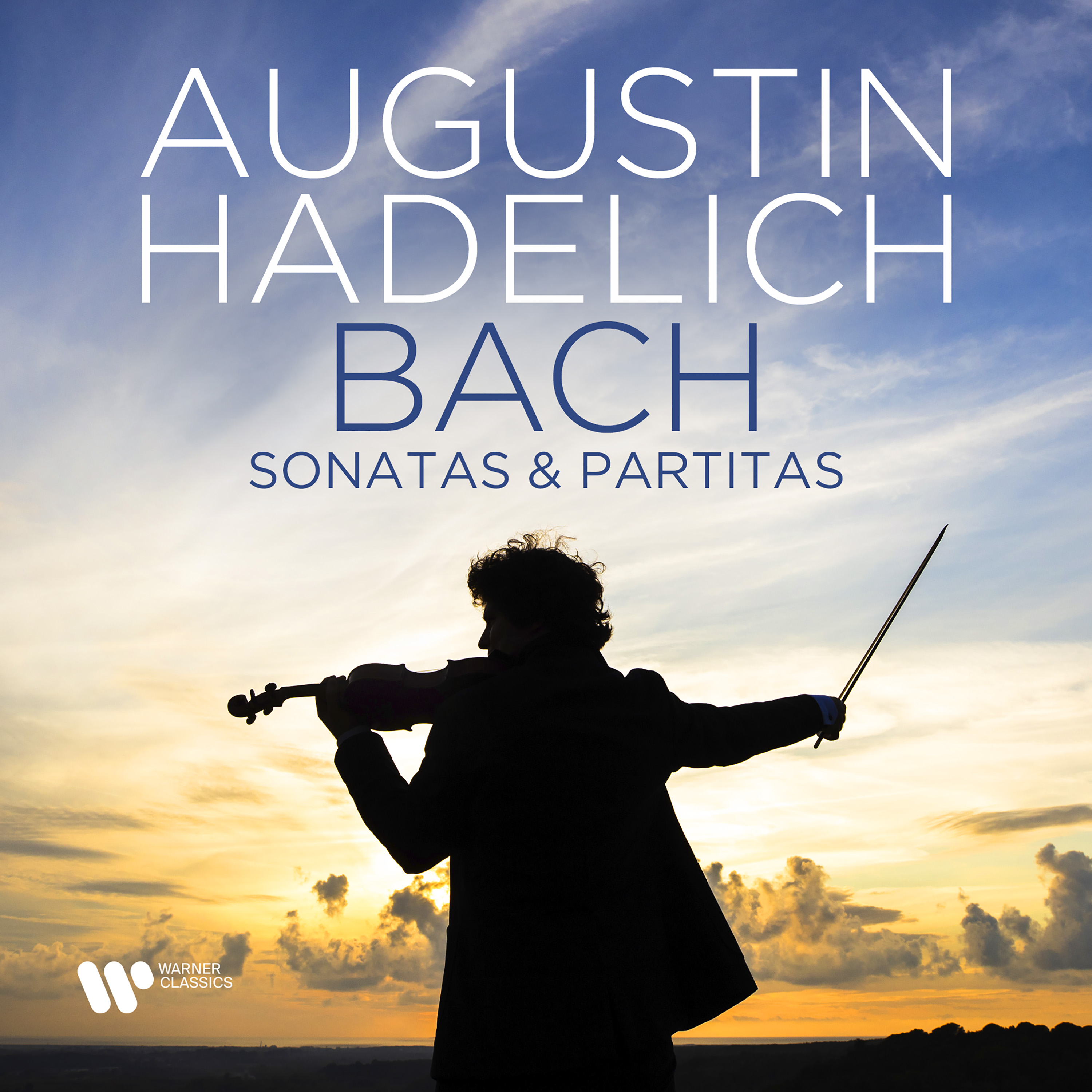
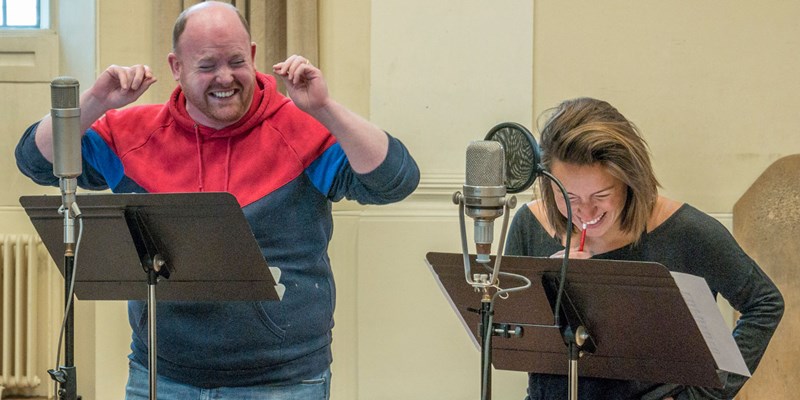
Nicky Spence and Mary Bevan performing The Farmyard Song
Vaughan Williams’s response to this treasure trove was, in each case, to provide an accompaniment to enhance the melody and, in most instances, to amplify the narrative of the text. The style of accompaniment is hugely varied, as William Vann, the project’s musical director, has commented. ‘Many retain a simplicity throughout their varied number of verses, so as to bring the melody to the fore, as in “Banks of Green Willow” [PBEFS], but others are a true revelation in their treatment of texture and colour; indeed, some of them have a strong affinity with Vaughan Williams’s original compositions, such as “O, who is that that raps at my window”, which might not have been out of place in On Wenlock Edge [FSS].’ With its rare Mixolydian colour and atmospheric tremolando, this powerful arrangement could easily have been scored for chamber ensemble or orchestra, as might other songs such as ‘The Maiden’s Lament’ (FSN). Two other songs from the same set (FSS), with their violin obbligato parts (sympathetically played by Jack Liebeck), ‘How cold the wind doth blow’ and ‘The Seeds of Love’, are deeply affecting. The former incorporates some striking passing modulation and characteristic plagal cadences, the latter a rich array of inventive and colourful progressions. The exquisite ‘Searching for Lambs’ (TEFS), with Spence (tenor) and Thomas Gould (violin), invokes the tender melancholy shades of The Lark Ascending, which Vaughan Williams may well have been working on at much the same time. Two songs, ‘On Board a Ninety-Eight’ and ‘The Captain’s Apprentice’ (FSEC), had already found their way into the Norfolk Rhapsody No 1, and it is possible to hear palpable references to ‘The Bloody Gardener’ (FSN) in the Fifth Symphony.
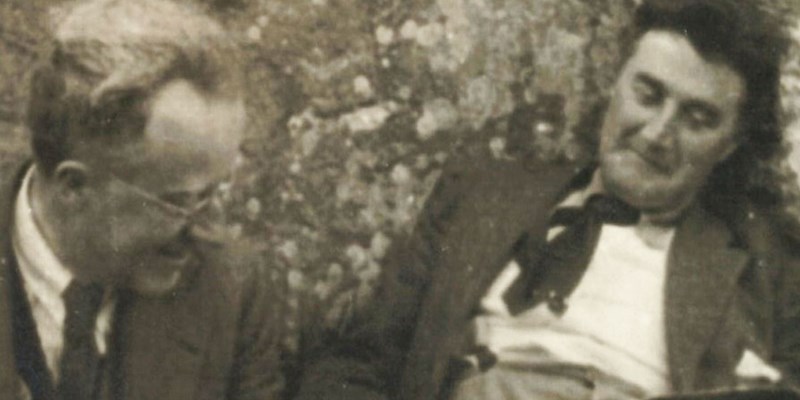
Vaughan Williams (right) with Gustav Holst in the Malvern Hills in 1921, after participating in the Three Choirs Festival in Hereford (photo: Thomas Eddis/EFDSS/Heritage Images/Getty Images)
There are several instances where the piano is expressively articulate in these arrangements. Many of the songs are effectively sets of strophic variations in the way that each verse attracts a new harmonisation, a fresh counterpoint, contrasting registers of the piano and a broad spectrum of Vaughan Williams’s extensive armoury of imaginative techniques. Among the last are robust diatonicism at the end of ‘The Morning Dew’ (FSN), the triadic parallelisms of ‘The winter’s gone and past’ (FSN), the walking bass of ‘Bold General Wolfe’ (FSS ) which we associate so closely with Vaughan Williams’s hymn tune Sine nomine), the solemn demeanour of ‘Geordie’ (FSEC) and the oompah patterns of ‘The Gypsy Laddie’ (FSN). Yet the prevailing, not to say indelible, impression left by many of these arrangements is the splendour of the melodies themselves, above all those of a plangent, introspective, even numinous nature. It was surely this inherent aspect of the English folk song which Vaughan Williams recognised in ‘Bushes and Briars’ (FSEC), in the simplicity of ‘I will give my love an apple’ (SCFS), in the moral warning of ‘The Captain’s Apprentice’ (FSEC), in the piercing beauty of ‘She’s like the swallow’ (FSN) and in the mournful, ruminative character of ‘Lord Thomas and Fair Ellinor’, ‘The Lovers’ Tasks’, ‘John Randolph’, ‘Fair Margaret and Sweet William’ and ‘The House Carpenter’ (all EFSSAM). This propensity for inner melancholy inhabits one of his earliest orchestral scores, In the Fen Country (1904), with its synthetic folk melodies, but it is also part of the broader stylistic landscape of Fantasia on a Theme by Thomas Tallis, Fantasia on Christmas Carols and A London Symphony and the deeply private world of A Pastoral Symphony.
The fact remains, however, that this rich vein of Vaughan Williams’s output has been extensively neglected, a circumstance borne out by the number of arrangements recorded here for the first time: 53. Francis has suggested that they ‘fell between two stools’. Singers in London’s concert rooms did not take them up in their recitals, preferring the composer’s ‘genuine’ art songs from The House of Life or Songs of Travel; at the same time, lovers of traditional folk song favoured the unaccompanied songs unsullied by the embellishments and refinements of art music. They were destined, therefore, to become confined to schools (which Sharp fervently endorsed) and competitive festivals (of which Vaughan Williams was a seasoned adjudicator). Away from the limelight, awareness of them dwindled.
Any devoted Liebhaber of Vaughan Williams will undoubtedly wish to own these highly appealing recordings – not least for the wonderfully controlled and characterful performances by Bevan, Spence, Williams and Vann, who clearly betray a deep empathy for the repertoire. I would, however, suggest that these arrangements embody a much greater significance, for not only do they enshrine the composer’s role in the folk-song revival but they also provide us with individual glimpses of that quintessential chemistry of folk song and art music which acted as the prime catalyst for Vaughan Williams to discover his true style and artistic direction.
This article originally appeared in the April 2021 issue of Gramophone. Never miss an issue – subscribe today




